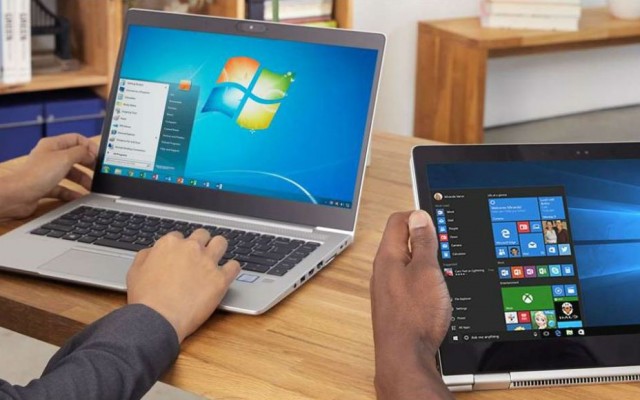Windows 7 Users Are Refusing to Upgrade to Windows 10: Here's Why
Windows 7 is nearing its end, but that hasn't discouraged people from using the operating system.

Credit: Microsoft
Windows 7 owns an astonishing 36.4% of the desktop OS market despite its impending expiry date of Jan 18, 2020, a decade after the OS was launched, according to a report from NetMarketShare (first reported by TechRadar).
That presents a serious problem for Microsoft, as Windows users appear reluctant to switch to Windows 10, which now accounts for 44.1% of the market share, a small improvement over the 43.6% from last month. In comparison, Windows 7 dropped by just 0.09%, which suggests Windows 10's gains are coming from elsewhere (likely macOS).
Microsoft is set to pull the plug on Windows 7 in just eight months time by ending security patches and support for the OS. While even that might not be enough to get some individuals to upgrade to Windows 10, it could be a serious problem for businesses that use Windows 7 across their workforce. A company risks losing sensitive information to malicious attacks if they remain on Windows 7 as their business laptops won't receiving crucial security updates.
That became a problem for the millions of diehard Windows XP users in 2017 when the WannaCry malware infected hundreds of organizations. The attack was so devastating that Microsoft was forced to release an update for Windows XP long after it stopped supporting the OS.
To avoid a similar situation, Microsoft has been pushing hard for users to upgrade to Windows 10. The company is even offering a free transition to the latest desktop OS for anyone who has a Microsoft 365 Business license.
Stay in the know with Laptop Mag
Get our in-depth reviews, helpful tips, great deals, and the biggest news stories delivered to your inbox.
There are several reasons why people are refusing to abandon Windows 7. For one, it can be a hassle for large businesses who have already deployed Windows 7 across their systems to make the change. For individual users, Windows 7 offers a familiarity and simplicity that Windows 10 threatens. Some users may also have a bad taste in their mouth after Windows 8, Microsoft's failed, touch-focused experiment that introduced the tile interface seen on Windows 10.
If you're ready to move to Windows 10 before Microsoft turns the lights off on Windows 7, then read our instructions on how to upgrade to Windows 10 for free. And if you're worried about getting everything set up how you like it, check out our Windows 10 beginners guide. For everything else about Windows 7 end of life, check out our guide.
Phillip Tracy is the assistant managing editor at Laptop Mag where he reviews laptops, phones and other gadgets while covering the latest industry news. After graduating with a journalism degree from the University of Texas at Austin, Phillip became a tech reporter at the Daily Dot. There, he wrote reviews for a range of gadgets and covered everything from social media trends to cybersecurity. Prior to that, he wrote for RCR Wireless News covering 5G and IoT. When he's not tinkering with devices, you can find Phillip playing video games, reading, traveling or watching soccer.

